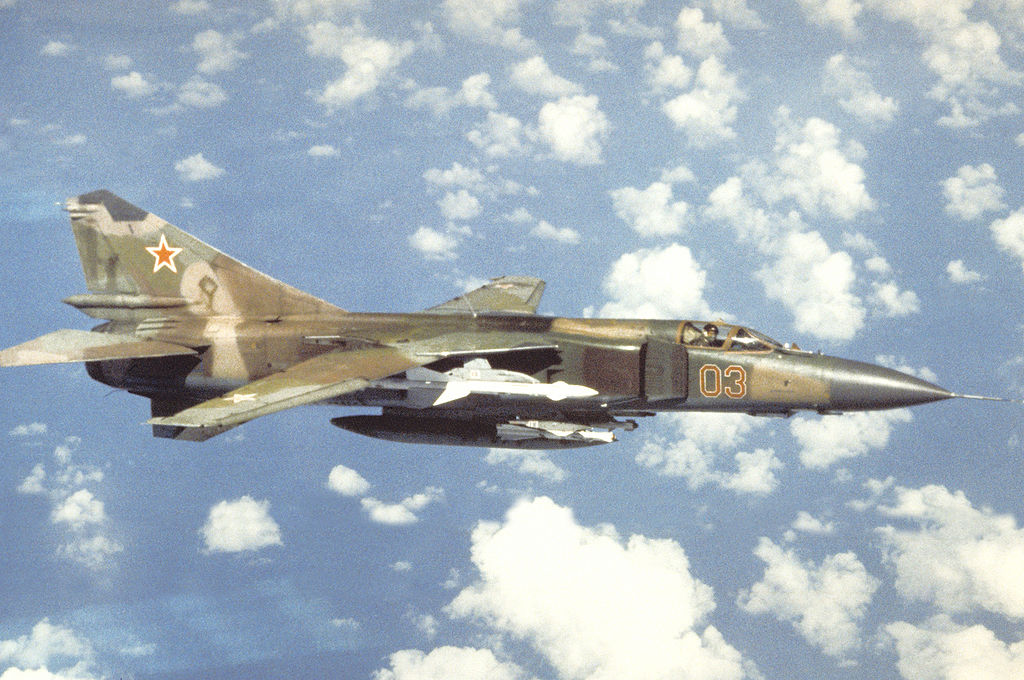New Delhi created ripples in 2019 when Indian Air Force (IAF) claimed that its Soviet-era Mig-21 Bison shot down a Pakistan Air Force’s (PAF) F-16 fighter jet with a Russian-origin Vympel R-73 missile.
Even though Islamabad quickly rejected the Indian claims, this was not the first time the Pakistani Air Force had done that.
To begin with, India and Pakistan came close to a full-scale war in 2019 when Indian warplanes crossed into Pakistan’s airspace and conducted airstrikes against terrorist groups.
The airstrikes were in response to a suicide bombing targeted at the convoy of vehicles carrying Indian security personnel on the Jammu–Srinagar National Highway that ended up killing 40 Indian troops.

Pakistan condemned the Indian airstrikes and vowed to retaliate. In a press conference, the spokesperson of the Pakistan Army, Major-General Asif Ghafoor, said that Pakistan would respond to the airstrike and would surprise India.
India-Pakistan Air Battle
On February 27, 2019, the PAF carried out Operation Swift Retort in response to the Indian air raid, as part of which low flying Pakistani jets thundered over the Rajouri and Poonch districts along the LoC, prompting the Indian side to scramble its fighters to intercept the Pakistani aircraft.

“The sole purpose of this action was to demonstrate our right, will, and capability for self-defense. We do not wish to escalate, but we’re fully prepared if forced into that paradigm,” Pakistan’s Foreign Office said in a statement following the operation.
The skirmish between the two air forces resulted in an IAF’s MiG-21 Bison being shot down with its pilot, Wg Cdr Abhinandan Varthaman, being captured by the Pakistan Army. Before going down, the Indian side claimed that Abhinandan had shot down a Pakistani F-16 aircraft.
IAF backed its claims by presenting radar data from its Phalcon AWACS and showcasing a fragment from a supposed AIM-120C-5 missile to prove the involvement of F-16 in the confrontation.

Pakistan rejected India’s claims describing them as “baseless.” “The international experts and US officials have already confirmed that no Pakistani F-16 was shot down on the day after taking stock of Pakistani F-16 aircraft,” said Pakistan’s Foreign Office in a statement.
Nevertheless, the entire episode spurred an intense debate within the defense and aviation community around the world, which went on for days after the incident. Even if these claims were true, this is not the first time a Soviet-made fighter had shot down a Pakistani F-16.
Pakistan F-16 Shot Down
During the Soviet-Afghan War, Pakistan’s F-16 jets were engaged in a series of skirmishes with various combat aircraft of the Soviet-backed Afghan air force. In one such battle that took place on April 29, 1987, two PAF F-16s of the No 14 squadron engaged a formation of four Russian MiG-23s that were carrying out a bombing operation in Afghanistan.

The two F-16s came in below the climbing MiG-23s when one of them was hit, and the Afghan government was quick to claim that it had succeeded for the first time in shooting down a Pakistani F-16 jet fighter.
However, it turned out that an AIM-9P Sidewinder missile fired by the F-16 flown by then Wg Cdr Amjad Javed had hit the right-wing of the other F-16, bringing it down. The F-16 that suffered the hit was flown by Flight Lieutenant Shahid Sikandar, who managed to eject safely.
Investigations revealed that the sensor, which is supposed to identify if the target locked on is a friend or a foe, had failed to identify the F-16 correctly. Experts at Pentagon found it hard to believe how an F-16 could shoot its wingman when the aircraft is equipped with one of the world’s best IFF (identify friend or foe) systems.
The system emits an electronic beam at the target and identifies the return beam as a friend or a foe. Furthermore, even the missile has an air intercept interrogation system that the firing pilot is supposed to switch on when the missile locks onto a target to reconfirm the aircraft’s identity. So, either the pilot failed to do that, or the system malfunctioned.

A month after the incident, during the Congressional hearings on the AWACS question, Pentagon experts called Pakistani pilots “some of the best in the world, next only to the Israelis” and found it even harder to accept the failure of such crucial components of the F-16 system.
Pakistan’s version of the incident was that Wg Cdr Amjad Javed fired his AIM-9P missile at the fleeing MiGs; however, in the heat of the battle, his wingman, who was also chasing the MiGs, came in the way. Since the F-16 has a much more powerful engine than any of the MiGs, the heat-seeking AIM-9P lost track and went straight for the F-16’s exhaust.
That said, the downing of the F-16 in a friendly fire was very embarrassing for Pakistan, according to one US administration who said at the time that the F-16 has “seized the imagination of the Pakistani people” to the extent that there are “F-16 cafes, F-16 T-shirts and F-16 bumper stickers. You can even see F-16s on the flaps of buses in Islamabad.”
- Written by Tanmay Kadam/EurAsian Times Desk
- Contact the author at etdesk@eurasiantimes.com
- Follow EurAsian Times on Google News




